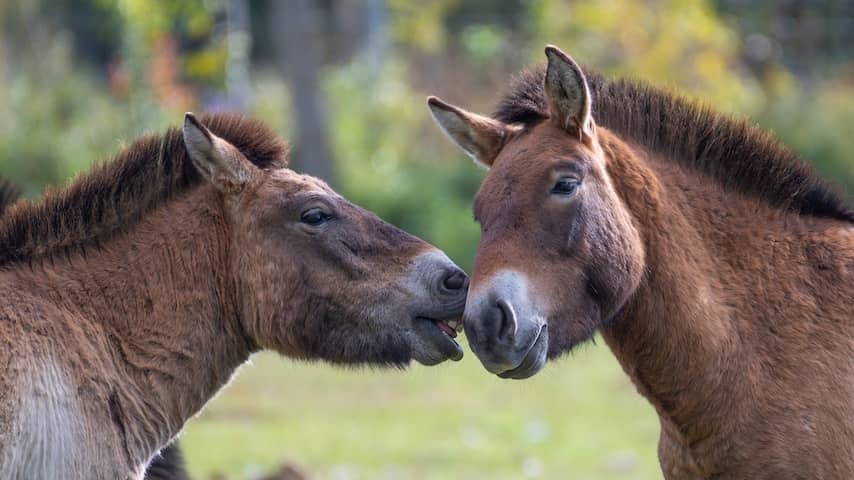 Okay, here’s the processed and translated content:
Okay, here’s the processed and translated content:
Large eyes, flat ears, and an open mouth: horses use this combination to let each other know they want to play. It is one of the many facial expressions that scientists have discovered in new research.
For the first time, scientists have investigated which facial expressions horses combine to convey certain messages to each other. The research from the University of Portsmouth is not the first into the interaction of horses but is the first tackled on a large scale.
Using an existing database of horse facial expressions, the scientists studied the behavior of 36 horses during various naturally occurring interactions. The team divided them into the categories playful, friendly, aggressive, and attentive.
After viewing 72 hours of footage, the researchers discovered that horses often use the same facial movements in different contexts, but that the combinations and intensity vary.
During friendly interactions, the horses examined tended to stick their noses forward. When they focus their attention on something, the horses’ ears were usually forward and close together.
Their ears went flat and were directed backward during aggressive confrontations. Meanwhile, the horses raised the insides of their eyebrows, widened their nostrils, and kept their heads low.
Horses, like primates and carnivores, have a ‘playful face’
When the horses were playing with each other, their lower lip was often retracted, their lips spread, their mouth wide open, and their ears twisted and flat backward. The researchers also noted that more sclera was visible during play, and their nose was pushed forward.
Researcher Kate Lewis tells The Guardian that it is known from primates and some carnivores, such as bears, that they open their mouth or muzzle when they are playing. This demonstrates that the interaction is not aggressive, in order to avoid an unwanted fight.
“With this, we can demonstrate that the ‘playful face’ also exists in horses and that the same muscles are used as in primates,” says Lewis. According to her, this suggests that there is a deep-rooted evolutionary basis for such behavior in all mammalian species.
“This research shows how important it is not to focus on just one aspect of the face, such as the ears,” Lewis continues. “We really need to look at all the individual movements in the face to see what facial expression is created.”
According to researcher Leanne Proops, the research is “a true revolution for everyone who works with horses”. “It gives us a new perspective on their behavior and interpretation, which ultimately leads to better care and stronger relationships between humans and animals.”